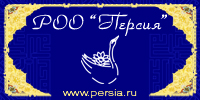
The Land of Orient
- Luiza Svitich. Sunrise on Sinai. The author of this essay tells about her pilgrimage to Sinai peninsula — the visit to St. Catherine’s monastery, the climb to Mount Sinai, and homage to the other sacred places in the vicinity. The article also features the detailed presentation of unique icons that are kept in the Church of Transfiguration.
- Marina Krutova. Manuscripts by Russian Pilgrims. A review of the manuscript books by Russian pilgrims to the Holy Land, which are kept in the collection of the Russian State Library.
- Vladimir Belyakov. ’There are so Many Picturesque and Interesting Things Here...’ In the heritage of Russian artist Vasiliy Polenov, pictures inspired by Gospels occupy quite significant place. In order to make them look more authentic, the artist had twice traveled to the Orient.
- Tatyana Filatova. Walks in Cairo. ’Here everything is mixed and entangled: slums and modern-style quarters; horse carts and limousines; street bazaar stalls infested with flies and marble-finished shopping cetres; dusty, noisy, dirty streets and silent, chilly mosque courts. Having solved this multicolour tangle, one can comprehend the whole history of Egypt’. Such is the conclusion of the author of this illustrated essay, which is filled with bright impressions and unhackneyed information.
- Aleksandr Mescheryakov. Mount Fuji: a Journey in Time. For a Japanese, the meaning of Fuji cannot be explained by just her physical characteristics. The image of this mountain, which had become the national symbol of the country, carries multiple cultural meanings that had been accumulated during many centuries. These meanings are the subject of the article by the renowned Russian specialist in Japanese studies.
- Mikhail Karpov. Finding Shelter from Heat in a Highland Mansion... The summer residence of the Manchu emperors of China in Chengde, which is situated in north-eastern part of Hebei Province, is now a conservation area, with many monuments of the past. Here one can easily imagine the unfolding of many dramas of Chinese history of the last three centuries.
- Svetlana Sysoeva. Descending Smoke in Tana Toraja. The dwellers of the mysterious Tana Toraja region on the Indonesian island of Sulawesi continue building the amazing houses-boats and keep their old animistic religion, Aluk To Dolo. The funeral ceremony is one of the main rituals of Toraja, and a local attraction that brings here crowds of tourists.
- Yelizaveta Malinina. Observing the Sounds of the World. The Putuo island in China had long since become the place for worshipping Guanyin, the Buddhist goddess of mercy and compassion. The spirit of the island is formed by numerous stories from the past of its monasteries and temples, and is rich in legends and traditions.
- Dmitriy Ivanov. The Adventures of Italians in Tibet. The basis of Tibetan studies in Europe had been laid by Catholic missionary monks who had made risky journeys to this highland country in the 17—18th century. This earliest period of Tibetan studies is reflected in several engravings, which are kept in Saint Petersburg, in the Museum of Anthropology and Ethnography of the Russian Academy of Sciences (Kunstkamera).
- Kseniya Leschenko. Edo-Tokyo and its Bridges. Since the time when Edo (Tokyo) had been founded, its bridges not only connected the different parts of the city, but also formed its infrastructure, created its unique image, and influenced the lifestyle of city dwellers. It is not for nothing that these bridges became a popular theme for many generations of landscape artists.
- Tatyana Vinogradova. Collected and Preserved: Chinese Popular Prints in Russia. One of the issues of the multivolume Corpus of the Chinese Nianhua, Popular Woodblock Prints, contains the works from Russian collections. This country has more than 6 thousand sheets of Chinese popular prints, the largest collection of these works of art outside China.
- Yuriy Averyanov, Pavel Basharin. Syunik, the Stronghold of Spirit. The name of Syunik belongs to a small region in south-eastern Armenia, which is rightfully considered as the cradle of Armenian culture.
Writings
- Marina Mongush. The Expedition to Uryankhai Region. The article describes the British expedition, led by Douglas Carruthers in 1910, to Tuva, Mongolia, and Eastern Turkestan. In the ensuing Carruthers’ scientific work, a separate volume is devoted to the description of Tuva, which at that time was called Uryankhai Region. The article is a kind of extension of the British traveler’s observations and conclusions to the present times.
- Douglas Carruthers. Unknown Mongolia. A fragment of the book, which describes the lifestyle and religious rites of the Tuvans, as well as the art of throat singing.
The subject of our ’Orientnet’ column is Laos/вставить гипер ссылку/, its past and present.
Please e-mail your wishes, suggestions and comments to the following address: orientnet@rsl.ru.
You can find the summaries of the previous issues online, by visiting our section of the Russian State Library Web-site: http://orient.rsl.ru/en/






